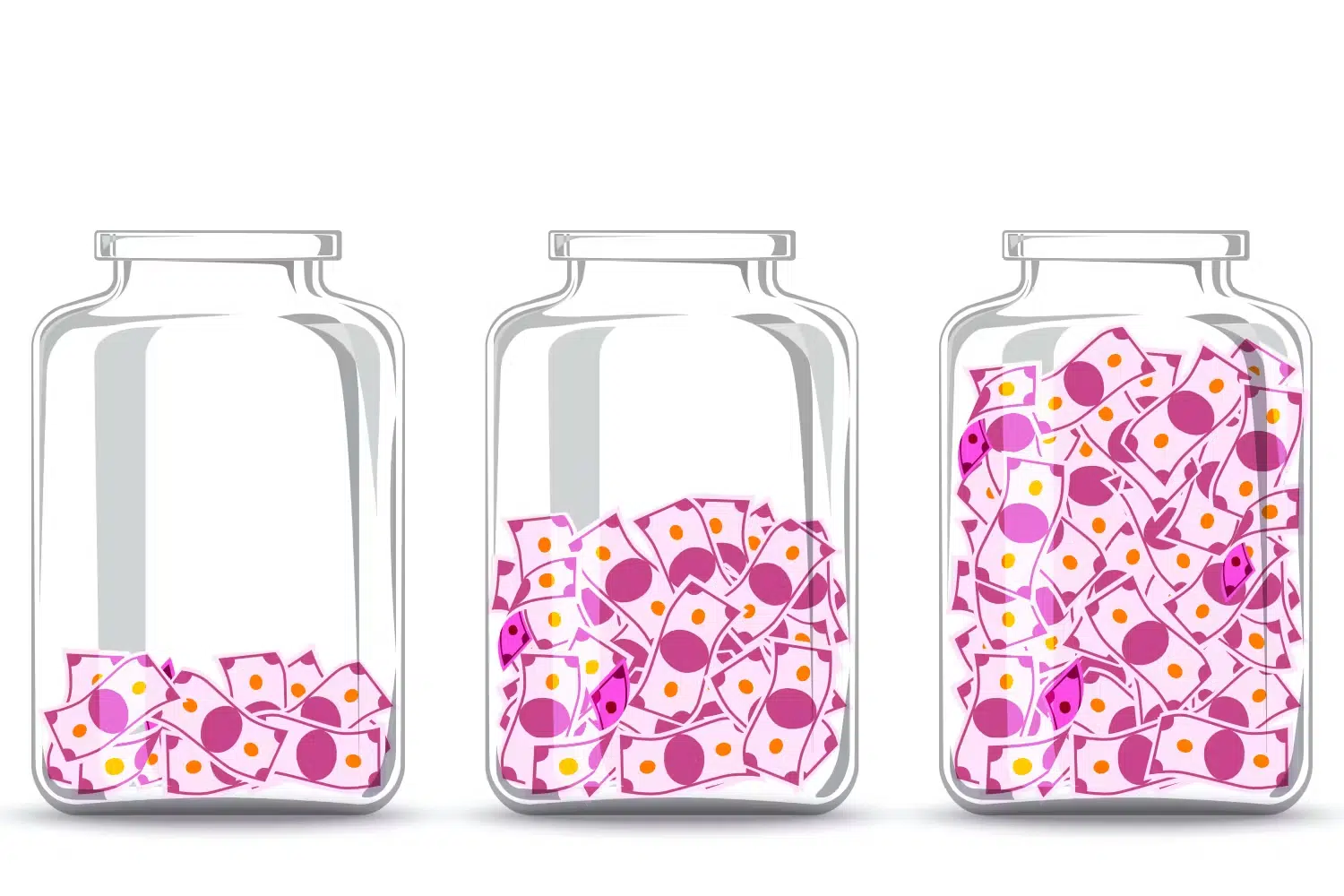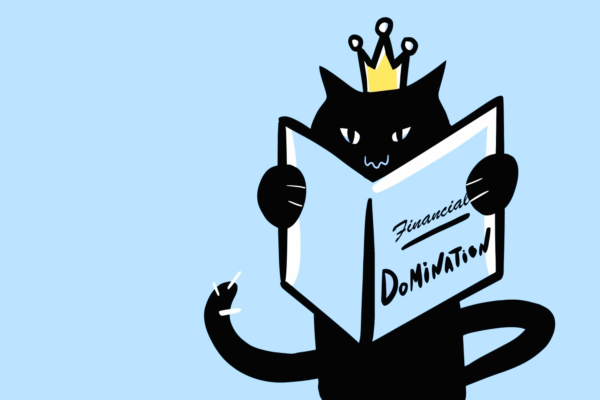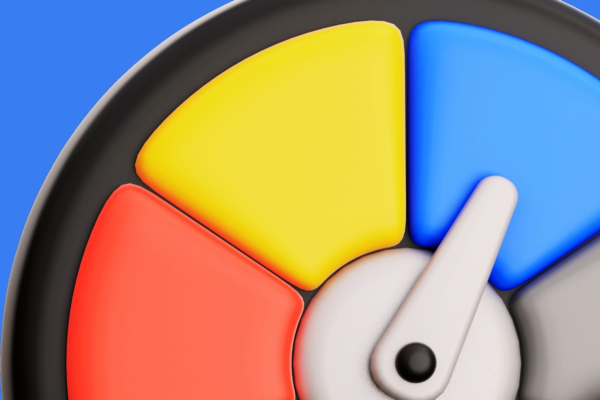
The Three Jar Method: Budgeting for Kids

As a parent or grandparent, you try to do everything you can to set your child up for success in the future. One of the best ways that a parent can do this is by laying down the foundations of financial literacy at an early age. By teaching your child the basics of managing money, you equip them with the skills they need to one day live independently, avoid financial pitfalls, and meet their financial goals.
When teaching your child financial concepts, it’s important to start small and simple. There’s no need to overwhelm or overload with spreadsheets and more complex topics. Instead, start with the basics— saving, spending, and giving.
Fee-Free Banking is Here
Looking for a financial institution that doesn’t nickel and dime you? If you live or work in Texas, join Amplify!
Budgeting for Kids with the Three Jar Method
The three jar method is an easy, fun way for children to learn the basics of financial goal setting, saving for the future, spending responsibly, and giving back to others. It takes an abstract concept and transforms it into a lesson that kids can see in action.
Children as young as three years old can begin to grasp these concepts and understand the value of money.”
Children as young as three years old can begin to grasp these concepts and understand the value of money.
Implementing this method is easy. You’ll start with three glass jars: one labeled saving, one labeled spending, and one labeled giving. Each time your child receives money— whether it be a gift from a relative, their weekly allowance, or running a lemonade stand— help them divide the cash into the three jars.
Teach them what the three jars are for and encourage them to use the money only for its intended purpose. Once they understand what each jar is for, work with them to determine how much money should go in each jar. For example, you may agree to put 30% of the money in savings, 20% in giving, and 50% in the spending jar. If they receive $5, they may put $1.50 in savings, one dollar in giving, and $2.50 in spending.
Jar #1: Saving
One of the main purposes of the jar method is to teach savings for kids. The money in this jar should be reserved for larger goals like a new bike, a video game, or a toy that they’ve really been wanting. You can even print out a picture of the item that they want and tape it to the jar for added motivation.
Let them know that the more money they put towards their long-term savings goals, the sooner they can get what they want. Help them resist the urge to dip into the savings jar to purchase smaller things that only bring temporary gratification. In the long run, this will help them build discipline and good habits.
Jar #2: Spending
The next jar is spending. The money in this jar can be used for the small things that your child may want in the immediate future like a toy at the grocery store, a candy bar, or a few game plays at the arcade. Older children may use this money when they hang out with friends or want to go shopping.
The idea is that they learn to manage their spending habits. Even though they may technically have more money in other jars, it doesn’t mean that they should spend it all at once on frivolous items. This helps them make smarter decisions on what purchases are worth it and which are not.
Jar #3: Giving
Last—but definitely not least—is the giving jar. Money put in this jar should go towards helping others. Maybe a portion of the money in this jar will go towards birthday presents for friends or doing something nice for a special family member. Another option is mutual aid, supporting the community in a way that’s meaningful to your child. The Giving jar can help them understand how their money can be used for other people.
Adding Other Jars
As adults, we typically don’t save for just one thing at a time. We might be saving for a house, a car, and retirement—all at the same time. Learning how to prioritize these savings goals is another skill that children can learn with jars. After your child has mastered three basic jars, they may decide that they want to divide up their savings even further.
For example, your kid decides they really want a new scooter…but they also want to go to summer camp this year. You can create two jars under the saving category, one for each item. Even though they may want the scooter a little more than the camp, there’s a deadline for signing up and paying for the summer camp. They’ll need to create a savings plan and allocate the appropriate amount of money each week to make sure they can sign up on time. This reflects how sometimes, as adults, we have to prioritize some financial goals, even if they aren’t for the thing we want most.
Going Beyond the Jars
Once your child is comfortable with saving, spending, and giving, you can begin to incorporate other personal finance lessons like banking and investing. Explain to your child the function of a financial institution and the different services that they offer. They should know that:
- You don’t lose your money when you deposit it in a financial institution: Your child may be worried that taking their money to the bank means never seeing it again. Make sure they understand how banks and credit unions help keep money safe.
- There are different types of accounts, and each operates a little differently: You should start your child out with a basic savings account. As they get older, you can introduce other types of accounts, such as checking.
- You can use multiple accounts for specific financial goals: Just as they had three jars for different needs, they can use multiple savings accounts for different goals. For instance, they can use one account to save for college or a big purchase.
- You can track how much money they have with online banking: With a bank account, your child may miss looking at their jar and seeing how close they are to their savings goal. Let them know that with online banking, you can help them check how much money they have— anytime and anywhere they want.
The Bottom Line: Financial Lessons Prepare Your Child for the Future
According to the Brookings Institution, teenage financial literacy is positively correlated with asset accumulation and net worth by age 25. Teaching your child the basics before they hit their teens only further instills these money management skills and increases the likelihood of financial security in their future.
The three jar method is an easy way to begin talking about money concepts with young children. As they master the foundational skills, you can introduce new ideas like banking, help your child open their very first bank account, and build their skills from there. Learning key concepts like spending, saving, and giving when they’re young can help set them up for financial success.
*Non-deposit investment products and services are offered through CUSO Financial Services, L.P. (“CFS”), a registered broker-dealer Member FINRA/SIPC and SEC Registered Investment Advisor. Products offered through CFS: are not NCUA/NCUSIF or otherwise federally insured, are not guarantees or obligations of the credit union, and may involve investment risk including possible loss of principal. Investment Representatives are registered through CFS. The Credit Union has contracted with CFS to make non-deposit investment products and services available to credit union members.
Prepared by Broadridge Investor Communication Solutions, Inc. Copyright 2018.
Become an Amplify Member
Every Amplify account holder enjoys fee-free banking. That means no overdraft, maintenance, or other banking fees cutting into your pocket.


